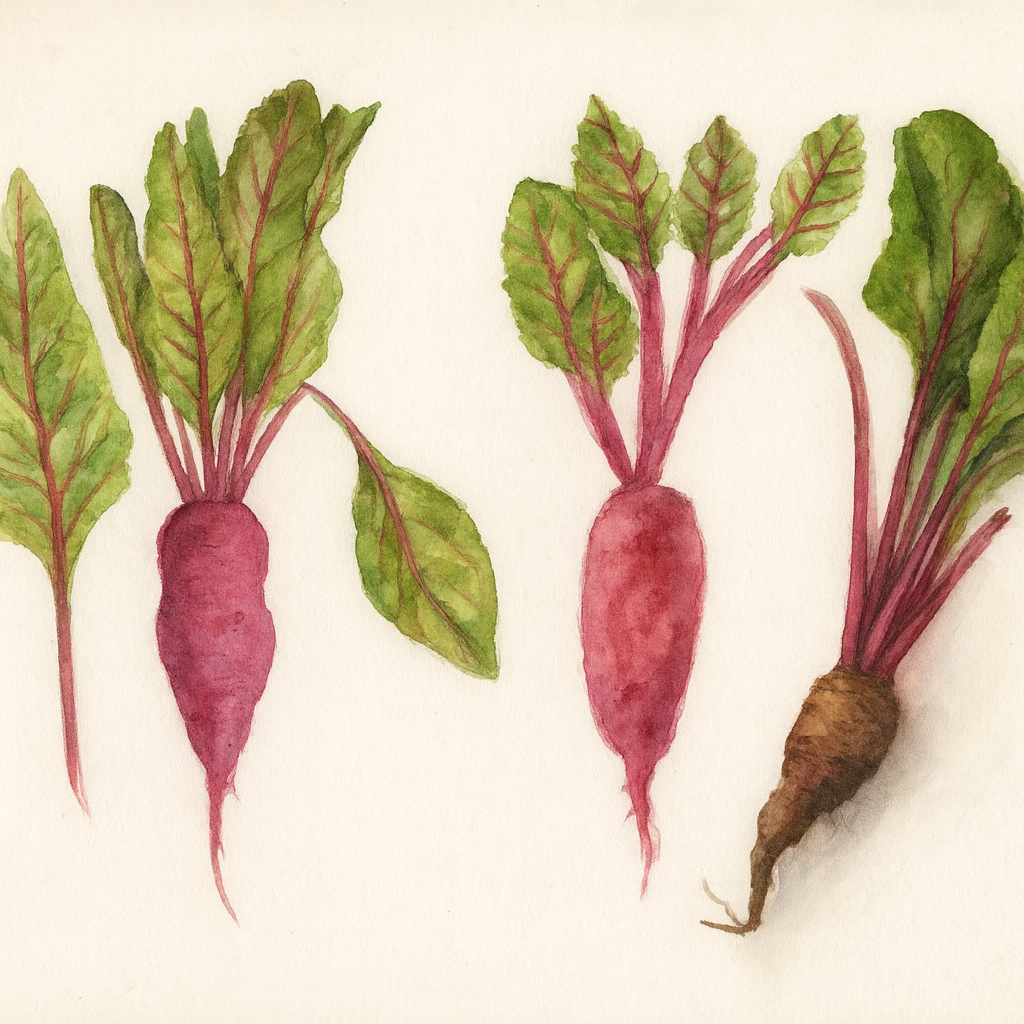
Math in the Garden
Math in the Garden
When it comes to math, there’s practical everyday math, then there’s everything you learn in school in your math class. While there is overlap, it’s sometimes hard to make the leap from a math worksheet on fractions to baking a batch of cookie and choosing to cut the recipe in half or double it. Equally it’s hard to make the leap from your percents worksheets, to calculating your final cost (plus tax) of a T-Shirt marked $14.99 with 40% and 8% sales tax. Or making the leap from your decimals worksheet to converting quarters to dollars. We encounter math daily and often what we learn in class takes years to master in real life. Math in the Garden is a brilliant book that takes the math class to the garden or other hands on activities and brings math to life in a relevant, practical and educational way.
UPDATES on Reprinting of Math in the Garden: Learn more about Math In The Garden by subscribing to their blog and their newsletter Like and follow their Facebook page Rest assured knowing that KidsGardening never sell their email lists They would love to add more homeschooling families to their audience.
Math in the Garden
-

Math in the Garden
Math In The Garden is an innovative math book that integrates math with practical real-life skills using the hands-on approach of garden work! I personally would like to see more books like this, so I'm happy to be sharing this book and all the activities we do from it.
-
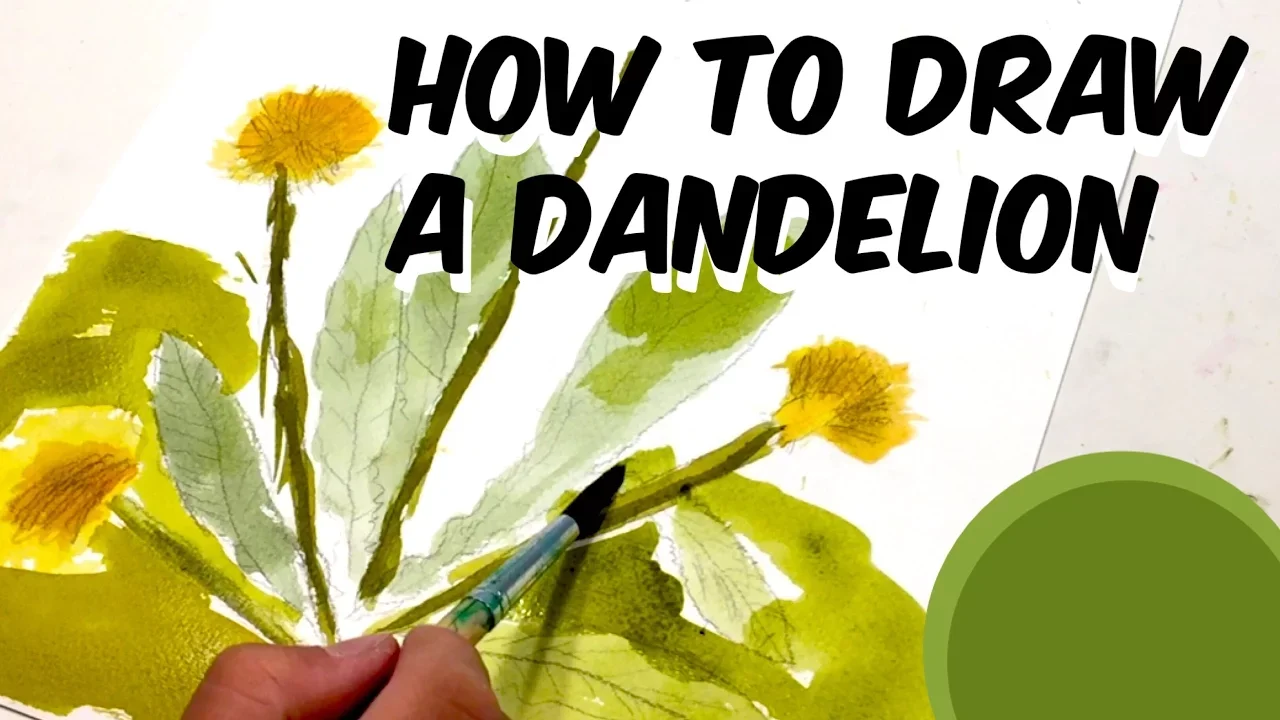
Watercoloring a Dandelion | Using Distress Inks
While putting together our nature units for the spring, we decided to include the book called Math In The Garden. This delightful book has garden projects that center around different math concepts. The books is beautifully done and is very complete offering a variety of math concepts from ages 5-13 as well as a list of state standards the projects will meet for quick reference.
-

How to Make a Rustic Garden Nature Journal
We are working through our Waldorf Main Lesson Block for Botany and included the book Math In The Garden, available at Acorn Naturalists, as part of our unit. This book does an excellent job weaving math into garden activities that are sure to delight and educate children is an interactive hands-on way.
-

Dandelion
We just finished making nature journals inspired by the book Math in the Garden. One of the first projects is to make a nature journal so that you have a place to record everything you learn when you do the activities suggested in the book
-
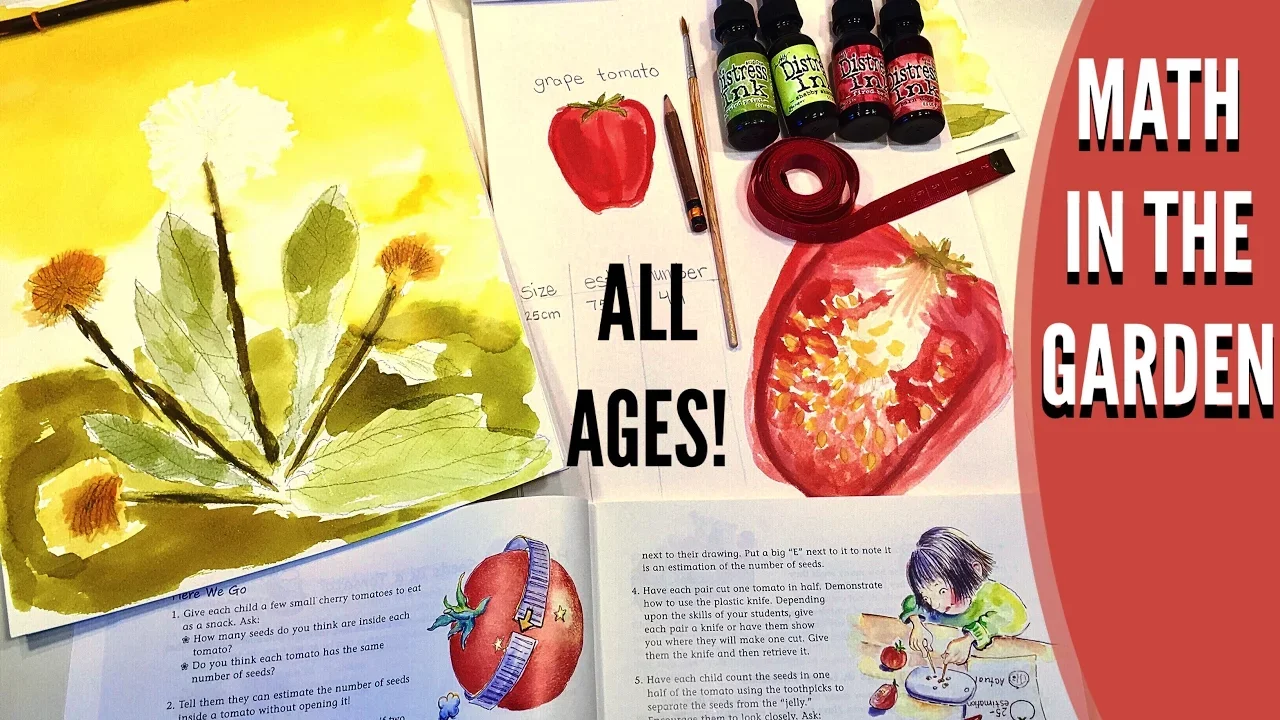
How to Estimate
Our Botany main lesson block for our Waldorf homeschool has been expanded to include a plants and trees unit study. For this unit, we added the book Math In The Garden published by Kids in the Garden.org . This book comes with several math lessons you can do while in the garden. The book is designed for ages 5-13, and it's packed with activities ranging from estimation, counting, area, and patterns all the way up to algebra.
-
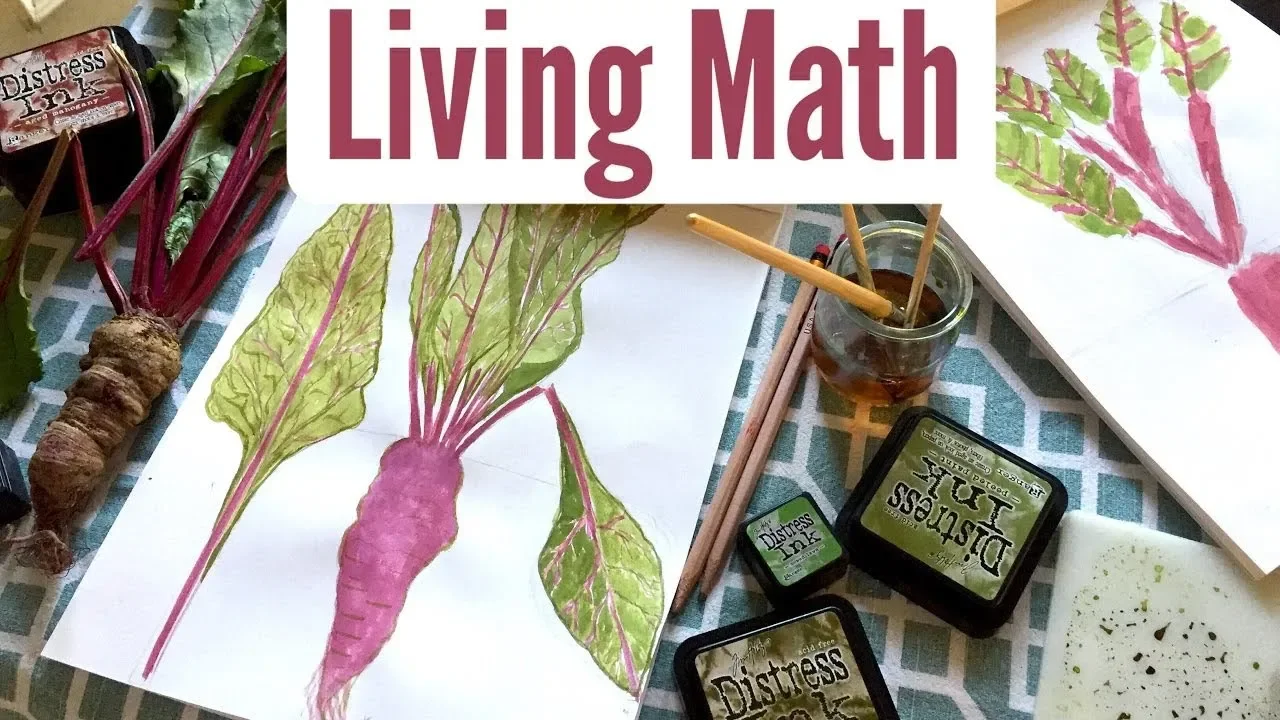
Teaching Ratios
Today, we are working on Ratios of Shoots and Roots, an activity for children 8-13 years of age. What I like about this book is that each lessons comes with multiple ways to approach the lesson or comes with various activities. You could complete them all or choose what suits you students, or you could use the book as inspiration and depart completely from the activities and design your own lessons and activities based on the information provided in the book.
-

Learning About Ratios
We are working through the book Math In The Garden. To see the lesson we are working on, swipe left. This lesson is on the ratio between roots and shoots. That's a drawing of a beet we harvested today. It got long and deformed.
-
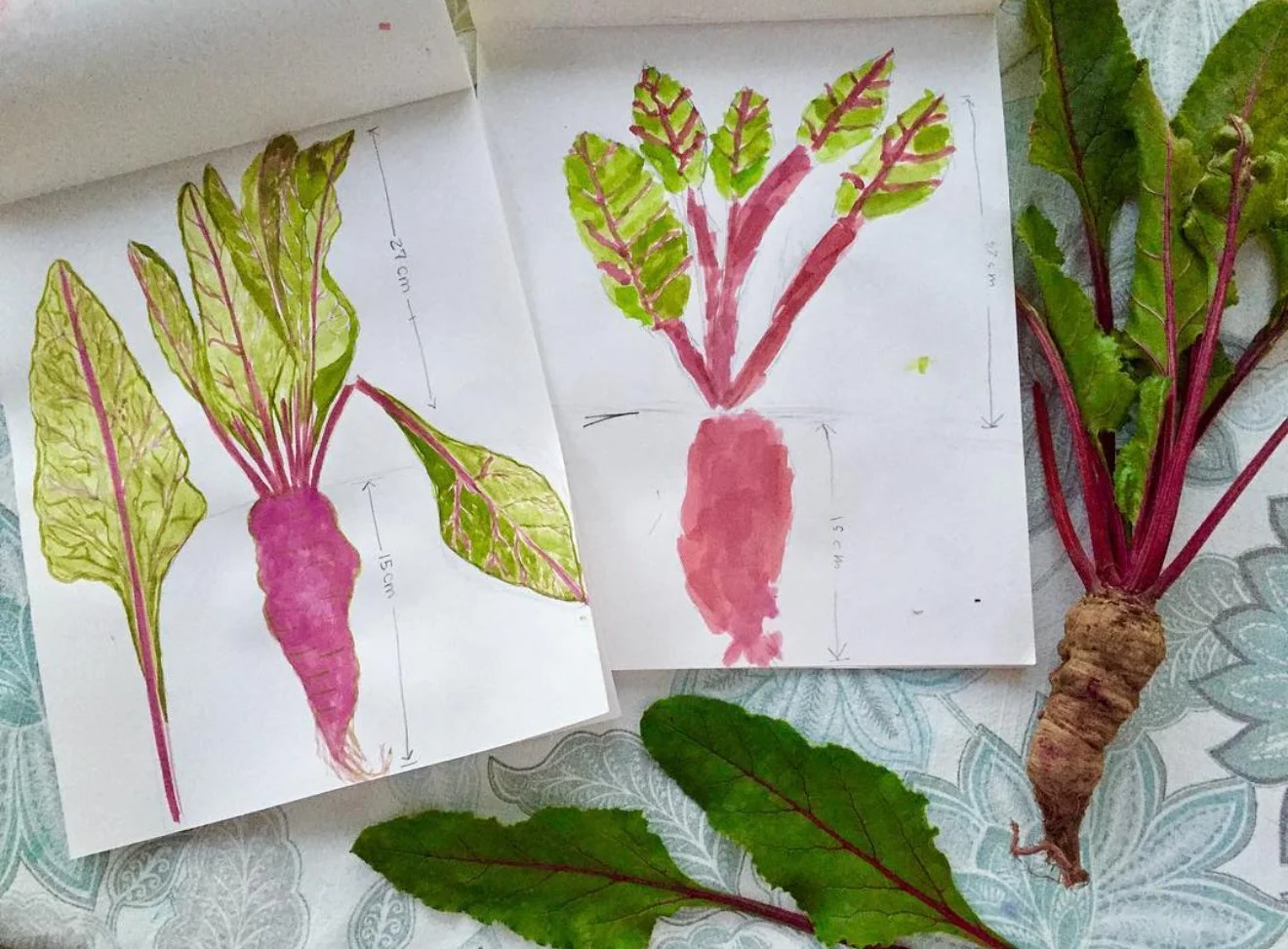
Our Garden Journal
We just completed our Math In The Garden lesson for today. Love this book!! Mine is on the left. My 10-year-olds is on the right. The beet was harvested from our garden earlier today. This lesson is on ratios.
-
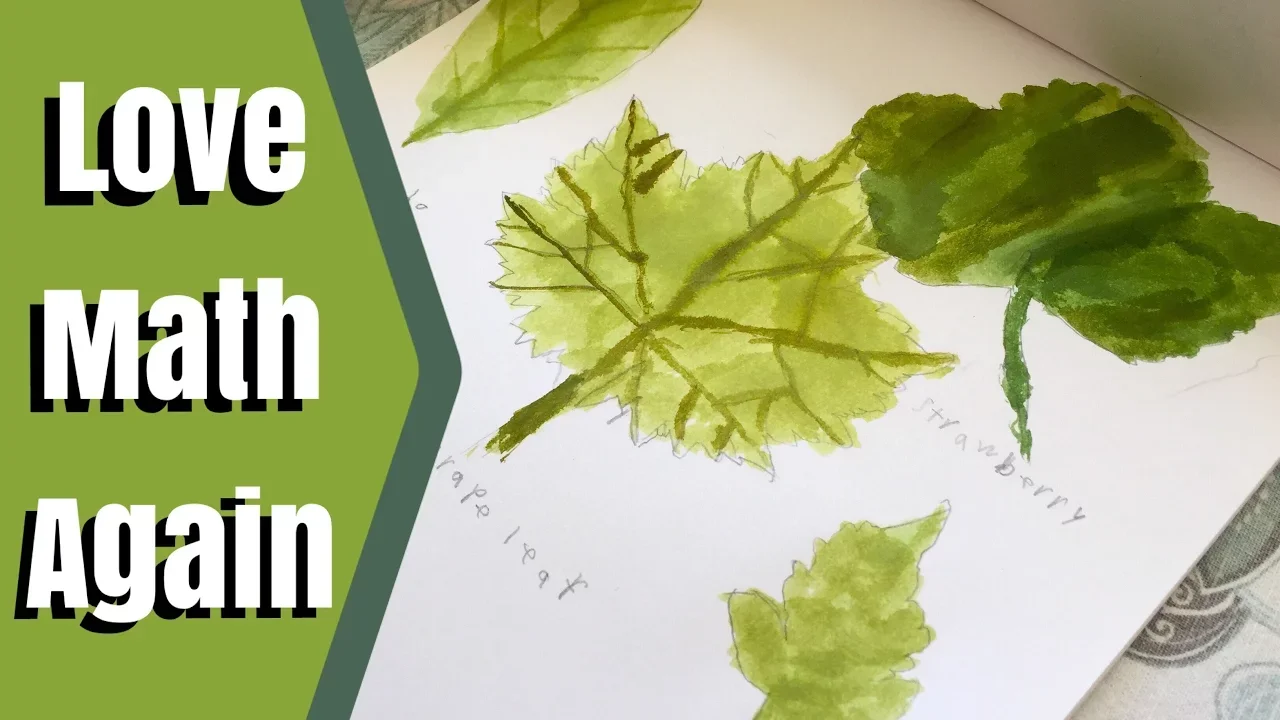
How to Find Area & Perimeter
There are many practical ways to learn about area and perimeter, and while I think starting with a square or rectangle is advisable as an introduction, once the student has learned how to measure and calculate the area and perimeter of their room or home, I think moving to the garden to measure and calculate perimeter and area of leaves is a fabulous hands-on idea.
-

Math & Grape Leaves
Working on another entry for our Math In The Garden book. This one is on leaf comparison and area. We pulled these leaves from our garden. We trimmed several grape leaves to make dolmas.
-

Practical Measurement Math | Length, Circumference, Median & Mean
We are making our way through the Math in the Garden Book and exploring Length, circumference, median and mean. We gathered an assortment of fruits and found that we have spring and summer fruits, but we can do this in the fall and winter as well with pomegranates, persimmons, and butternut squash.
-
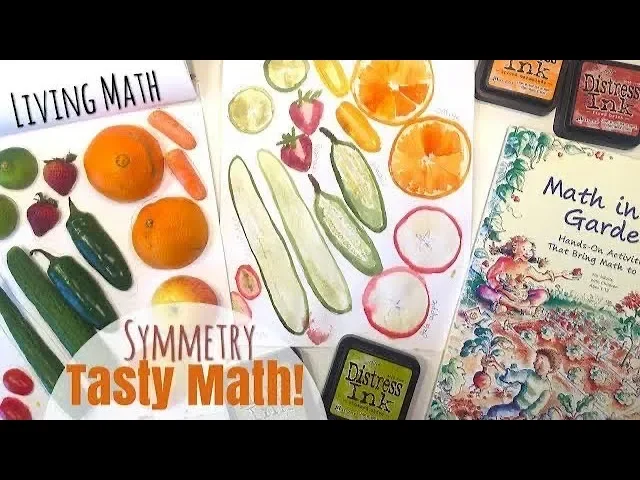
Symmetry in Math
What I like about this book is that each lessons comes with multiple ways to approach the lesson or comes with various activities. You could complete them all or choose what suits you students, or you could use the book as inspiration and depart completely from the activities and design your own lessons and activities based on the information provided in the book.
-

Living Math
We wrapped up our Math in the Garden unit with this project we started months ago. We planted dwarf sunflower seeds in little paper pots we got from a root observation kit from Nature-Watch. We made a T-Chart and a graph in our garden notebook and filled in the height of the sunflower each week. Or so that was the idea.
Math in the Garden
When it comes to math, there’s practical everyday math, then there’s everything you learn in school in your math class. While there is overlap, it’s sometimes hard to make the leap from a math worksheet on fractions to baking a batch of cookie and choosing to cut the recipe in half or double it. Equally it’s hard to make the leap from your percents worksheets, to calculating your final cost (plus tax) of a T-Shirt marked $14.99 with 40% and 8% sales tax. Or making the leap from your decimals worksheet to converting quarters to dollars. We encounter math daily and often what we learn in class takes years to master in real life. Math in the Garden is a brilliant book that takes the math class to the garden or other hands on activities and brings math to life in a relevant, practical and educational way.
UPDATES on Reprinting of Math in the Garden: Learn more about Math In The Garden by subscribing to their blog and their newsletter Like and follow their Facebook page Rest assured knowing that KidsGardening never sell their email lists They would love to add more homeschooling families to their audience.
Watercoloring a Dandelion | Using Distress Inks
Watercoloring Nature Journal Cover
When putting together our nature units for the spring, we decided to include the book called Math In The Garden. This delightful book has garden projects that center around different math concepts. The books is beautifully done and is very complete offering a variety of math concepts from ages 5-13 as well as a list of state standards the projects will meet for quick reference. The first project is a nature journal for the child to record the projects he will do throughout the book. Instead of using cardstock, we decided to watercolor dandelions on 90lb. Fabriano watercolor paper available at Dick Blick. This project took about 30-60 minutes to complete and is suitable for KG-8th grade. I love the way the art turned out and I love the nature journal even more!
For this project, you will need watercolor paper, pencil, eraser, watercolors and an image to copy. We also made our fully bloomed dandelion using embossing powder for a fun resist look. For this you will need a Zig embossing pen, white embossing powder, and a heat gun. Additionally, you can finish off the dandelion with glitter glue. Most items can be found at local crafts stores. The cost of this project is minimal if you already have the tools. However, for simple watercoloring project, you can do this for less than a dollar per student. For our watercolors, we are using Tim Holtz Distress inks by Ranger in an assortment of yellow and greens: Shabby Shutters, Peeled Paint, Crushed Olive, Bundled Sage, Forest Moss, Wild Honey and Scattered Straw.
How to Make a Rustic Garden Nature Journal
Nature Journal
The first project of the book is how to make your own Garden Journal. The book recommends using cardstock for the front cover, but we decided to watercolor a spring nature scene of dandelions in bloom, and we are so happy with the result.
For this project you will need: Cardstock for the cover or watercolor paper Twig or stick the width of your paper Drawing paper (8-10 sheets) A hole punch Rubber band or twine Optionally: a score board.
Directions: Hole punch the top of all your papers including the front cover in the same spot. Score the top of your papers at 3/4 of inch (optional) for easy folding. Tie twine around your twig and thread it through the hole. Repeat at each hole and tie off the end.
How to Estimate
Learning to Estimate in the Garden
Our Botany main lesson block for our Waldorf homeschool has been expanded to include a plants and trees unit study. For this unit, we added the book Math In The Garden published by Kids in the Garden.org . This book comes with several math lessons you can do while in the garden. The book is designed for ages 5-13, and it’s packed with activities ranging from estimation, counting, area, and patterns all the way up to algebra. It’s written in a way that inspired living math concepts through garden and hands-on work. So far we love this book and think it’s very well done. How to make the garden journal video. Math in the Garden Playlist. Waldorf Botany Main lesson block. Math in the Garden used to be available at Acorn Naturalist.
Watercoloring Dandelion
We just finished making nature journals inspired by the book Math in the Garden. One of the first projects is to make a nature journal so that you have a place to record everything you learn when you do the activities suggested in the book. I will be sharing the book, the nature journal and how to make the dandelion art on my channel now! How to make the garden journal video. Math in the Garden Playlist. Waldorf Botany Main lesson block. Math in the Garden used to be available at Acorn Naturalist.
Teaching Ratios
Learning about Ratios in the Garden
We are working through the book Math In The Garden, and finding a lot of inspiration for math activities from this book. It is designed to integrate math with gardening and does so beautifully with innovative lessons that are explained well and enhanced with delightful illustrations. Today, we are working on Ratios of Shoots and Roots, an activity for children 8-13 years of age. What I like about this book is that each lessons comes with multiple ways to approach the lesson or comes with various activities. You could complete them all or choose what suits you students, or you could use the book as inspiration and depart completely from the activities and design your own lessons and activities based on the information provided in the book. This is How to make the garden journal video. Math in the Garden Playlist. Waldorf Botany Main lesson block. Math in the Garden used to be available at Acorn Naturalist.
Learning About Ratios
We are working through the book Math In The Garden. To see the lesson we are working on, swipe left. This lesson is on the ratio between roots and shoots. That's a drawing of a beet we harvested today. It got long and deformed. This is one awesome book! I highly recommend it. We've now completed three activities from the book and aim to do more. Each lesson has many activities and supplements, so it can be varied and explored. So far, we've kept it simple, but you could easily dive into each lesson and take a week on it doing each activity within the lesson. The instructions are easy to follow, the illustrations are delightful and helpful to understanding the lesson, and content is superb. It's a treasure for any homeschool or classroom library. See the Post on Instagram. This is How to make the garden journal video. Math in the Garden Playlist. Waldorf Botany Main lesson block. Math in the Garden used to be available at Acorn Naturalist.
Our Garden Journal
We just completed our Math In The Garden lesson for today. Love this book!! Mine is on the left. My 10-year-olds is on the right. The beet was harvested from our garden earlier today. This lesson is on ratios. It's a treasure for any homeschool or classroom library. See the Post on Instagram. This is How to make the garden journal video. Math in the Garden Playlist. Waldorf Botany Main lesson block. Math in the Garden used to be available at Acorn Naturalist. See the Post on Instagram.
How to Find Area & Perimeter
How to Find Area and Perimeter
There are many practical ways to learn about area and perimeter, and while I think starting with a square or rectangle is advisable as an introduction, once the student has learned how to measure and calculate the area and perimeter of their room or home, I think moving to the garden to measure and calculate perimeter and area of leaves is a fabulous hands-on idea. This is How to make the garden journal video. Math in the Garden Playlist. Waldorf Botany Main lesson block. Math in the Garden used to be available at Acorn Naturalist.
How To Make Grape Leaves
How to Make Grape Leaves
Working on another entry for our Math In The Garden book. This one is on leaf comparison and area. We pulled these leaves from our garden. We trimmed several grape leaves to make dolmas. While the rolled grape leaves filled with ground beef and rice cooked, we worked on this project. Next we'll take measurements of our leaves. See the Post on Instagram. This is How to make the garden journal video. Math in the Garden Playlist. Waldorf Botany Main lesson block. Math in the Garden used to be available at Acorn Naturalist. See our family video on how we made Grape Leaves.
Length, Circumference, Median & Mean
Length, Circumference, Median, and Mean
We are working through the book Math In The Garden, and finding a lot of inspiration for math activities from this book. It is designed to integrate math with gardening and does so beautifully with innovative lessons that are explained well and enhanced with delightful illustrations. Today, we are working on Measurement: Length and Circumference with garden fruit and vegetables, an activity for children 8-13 years of age. To increase the difficulty of this lesson, you can add the activities of lining up the fruit in order of longest to smallest to determine the median and once again line up the fruit in order of circumference to find the median. You can also calculate the mean for circumference and length. What I like about this book is that each lessons comes with multiple ways to approach the lesson or comes with various activities. You could complete them all or choose what suits you students, or you could use the book as inspiration and depart completely from the activities and design your own lessons and activities based on the information provided in the book. This is How to make the garden journal video. Math in the Garden Playlist. Waldorf Botany Main lesson block. Math in the Garden used to be available at Acorn Naturalist.
How to Graph Plant Growth
Graphing Plant Growth
This was one project that took time to complete as we needed to wait for our seedling to grow. You may consider using fast growing beans and complete this project within 1-2 weeks. You could complete them all or choose what suits you students, or you could use the book as inspiration and depart completely from the activities and design your own lessons and activities based on the information provided in the book. This is How to make the garden journal video. Math in the Garden Playlist. Waldorf Botany Main lesson block. Math in the Garden used to be available at Acorn Naturalist.













